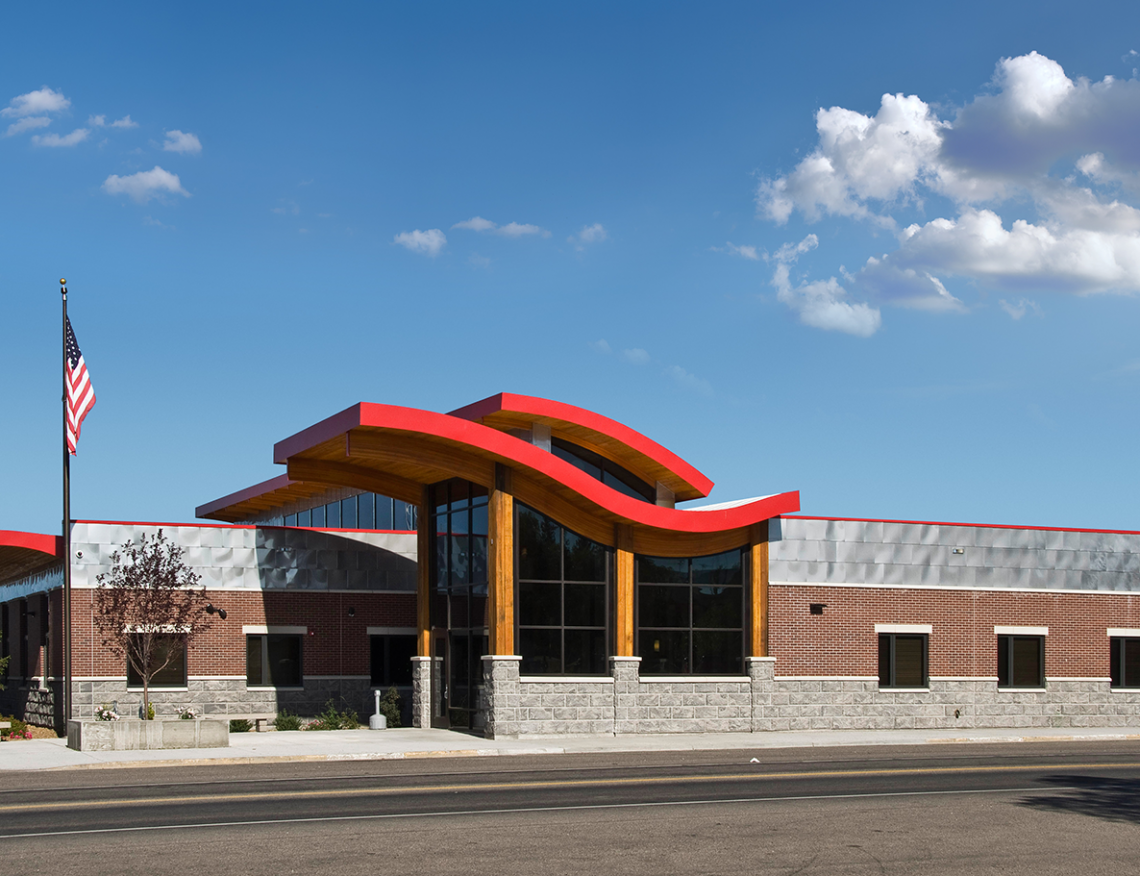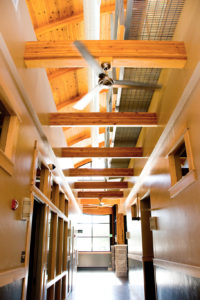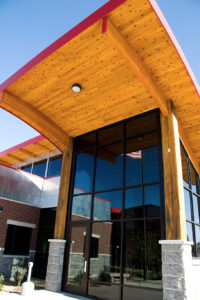
Teton County needed to move their Sheriff and associated departments out of an antiquated Courthouse Building. JHS compared the options of remodeling an existing building versus starting with a new design. The County Commissioners decided to proceed with a new building that could fully meet their needs.
Heating and Cooling is accomplished with electric powered heat pumps, thermally protected in an enclosed mechanical room above the rear vestibule. The heat pumps pull heat from the outside air that moves through the room via louvered walls. We use re-claimed waste or exhaust heat, supplemented by a propane heater, to keep the mechanical room above 35 degrees allowing the heat pumps to work efficiently. The heating and cooling energy is distributed in liquid media to above-ceiling mounted fan coil units which put heat in and pulls heat out of a specific room as needed. Excess heat is transferred through the liquid refrigerant to rooms in need of heat, at the same time cooling rooms that contributed the heat. Driggs does not enjoy a natural gas pipeline. Thus, the mechanical system choices are limited. The heat pump system, as modified, is very operationally efficient and results in multiple points of thermal control.
After the exhaust air is stripped of most its latent heat via a heat exchanger, the waste air it ducted out below the North SallyPort exit drive. The residual heat remaining in the exhaust heat is enough to keep the snow and ice from building up on the driveway.
South facing winds are shaded with overhangs calculated to let winter sun into the building while also shading the windows progressing to almost 100% as the season heats up. The mechanical system efficiently moves any solar overheat to the cooler north side of the building. A high glass clerestory floods the center hall with sunlight in all season while, again, shading out the strong heat of the sun during the summer. Center hall sunlight is “borrowed” or shared with adjoining interior rooms provides the building with an approximate 80% daylight factor. Electrical light switching is further controlled with timers and photo cells to be off when unoccupied.
Finally, the roof is sloped inwardly to drain into below ground infiltrators. There are three additional paths for drain water to leave the roof if a drain were to plug; the last being an open-hole scupper through the wall. The advantage of the roof design is that we avoid all snow slides, water damage to masonry and ice buildups on the walking surfaces around entries.

